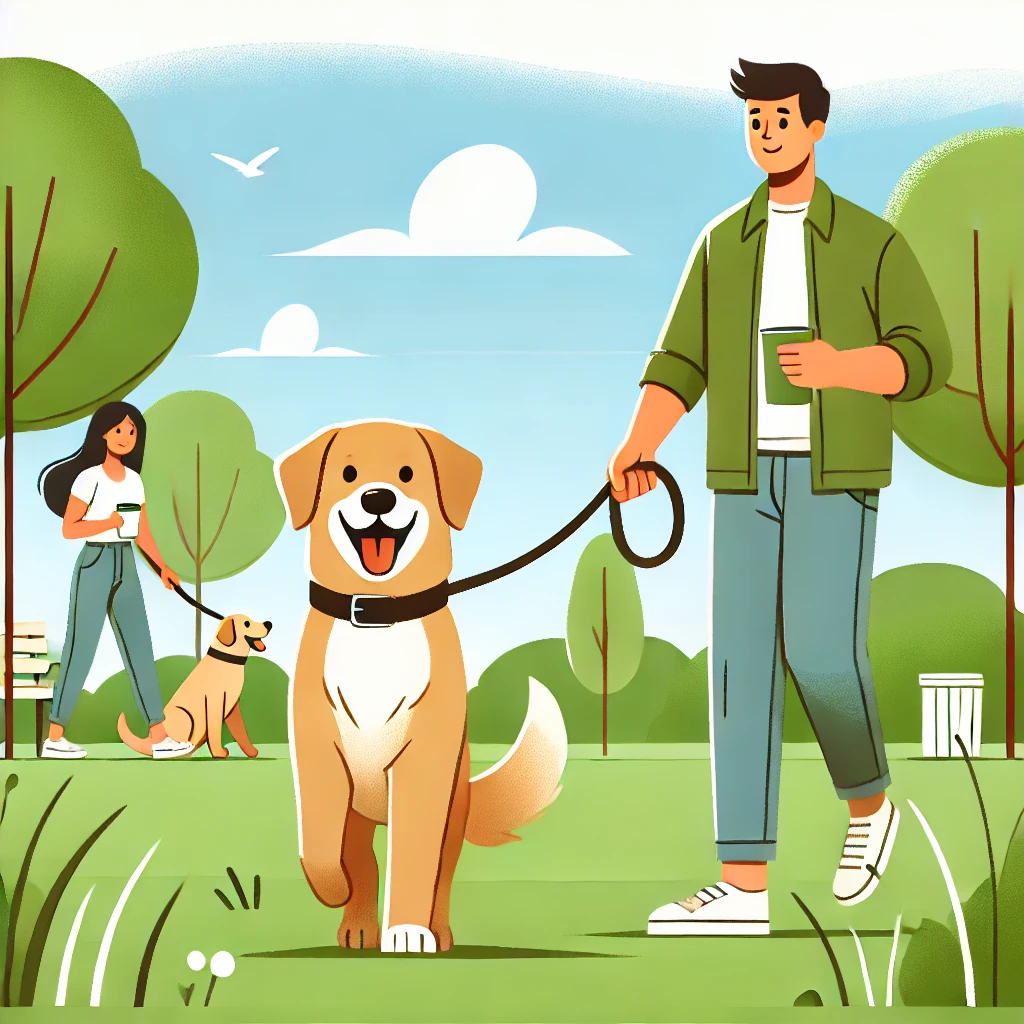Walking your dog is one of the simplest yet most effective ways to keep your furry friend healthy, happy, and well-behaved. It’s more than just a potty break; it’s a chance for exercise, mental stimulation, and bonding. Whether you’re a new dog owner or a seasoned pet parent, this guide will provide valuable insights into making the most out of your dog-walking routine.
Why Dog Walking is Important
-
Physical Exercise: Dogs need regular exercise to maintain a healthy weight and to prevent conditions like obesity, arthritis, and heart disease. Walking helps burn calories and keeps their muscles toned.
-
Mental Stimulation: A walk is an adventure for your dog. The sights, sounds, and smells they encounter provide crucial mental stimulation. This can help reduce boredom and the destructive behaviors that often accompany it.
-
Socialization: Walks offer opportunities for your dog to meet other people and animals. This social interaction is vital for developing their social skills and reducing anxiety or aggression.
-
Bonding Time: Walking your dog strengthens the bond between you. It’s a time where you can focus on each other, reinforcing your relationship through shared experiences.
Tips for a Successful Dog Walk
-
Choose the Right Equipment: Ensure your dog is comfortable and secure with the right collar or harness and a sturdy leash. Avoid retractable leashes as they can be difficult to control in busy areas.
-
Plan Your Route: Pick a safe route that suits your dog’s size, age, and energy level. Avoid busy streets with heavy traffic and opt for parks, trails, or quiet neighborhoods.
-
Set a Routine: Dogs thrive on routine. Try to walk your dog at the same times each day to establish a predictable schedule.
-
Stay Safe: Always keep your dog on a leash unless you’re in a designated off-leash area. Be mindful of your surroundings and watch for potential hazards like other dogs, cars, and wildlife.
-
Practice Good Behavior: Teach your dog basic commands like “sit,” “stay,” and “heel” to ensure they walk nicely on a leash. Reward good behavior with treats and praise.
-
Hydrate and Rest: Bring water for your dog, especially on longer walks or hot days. Take breaks if your dog seems tired or overheated.
-
Clean Up: Always carry poop bags and clean up after your dog. It’s essential for keeping your community clean and maintaining good relationships with your neighbors.
Overcoming Common Dog Walking Challenges
-
Pulling on the Leash: If your dog pulls, stop walking and stand still until they come back to you. Reward them for walking beside you. Consistent training can help reduce pulling.
-
Reactivity to Other Dogs: If your dog is reactive, try to keep a safe distance from other dogs. Use treats to distract and reward them for calm behavior. Consulting a professional trainer can also be beneficial.
-
Fear of New Environments: Gradually introduce your dog to new places and experiences. Start with quiet, familiar areas and slowly increase exposure to busier environments.
Making Dog Walking Enjoyable for Both of You
-
Mix It Up: Vary your routes and destinations to keep walks interesting. Visit different parks or explore new neighborhoods.
-
Incorporate Play: Bring along a favorite toy or take breaks to play fetch. This adds an extra layer of fun and exercise.
-
Social Walks: Arrange walking dates with other dog owners. Social walks can be enjoyable for both you and your dog, providing a chance for social interaction.
-
Use a Dog Walking Service: If you’re busy or unable to walk your dog, consider hiring a professional dog walker. Ensure they are experienced and have good references.
Conclusion
Dog walking is a simple yet powerful way to enhance your dog’s physical and mental well-being. By following these tips and making walks a regular part of your routine, you can ensure that your dog stays healthy, happy, and well-behaved. Plus, it’s a great way for you to get some exercise and fresh air too. So grab that leash, put on your walking shoes, and enjoy the many benefits of walking with your furry friend!



